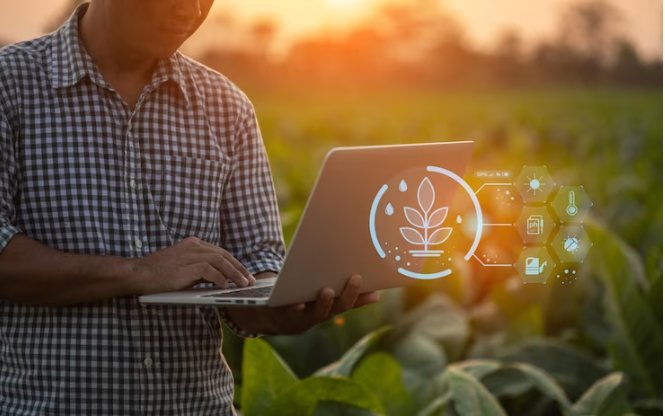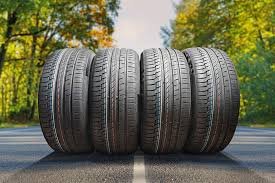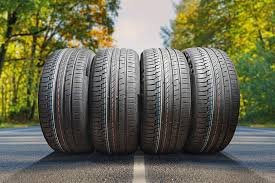
Digital agriculture refers to the integration of advanced digital technologies into farming practices to optimize yield, improve efficiency, and reduce environmental impact.
Sustainable food production is essential to meet the growing demand for food without compromising the ability of future generations to meet their own needs.
In this blog, we will look at the crucial role that digital agriculture plays in promoting sustainability in food production through various innovative technologies and practices.
Understanding Digital Agriculture
Digital agriculture adopts a comprehensive strategy utilizing technology to enhance precision and control in farming practices.
Key components and technologies
Precision farming
Precision farming in agriculture involves carefully observing, measuring, and responding to variations within and between fields. Through a crop management solution farmers can focus on efficient practices, boosting yields while conserving resources.
It’s not just about productivity; it’s also about sustainability. By cutting environmental impact and optimizing resource use, farmers can make smarter choices based on the data collected. This leads to better crop quality and greater farm productivity.
Internet of Things (IoT) in agriculture
Utilizing IoT devices in the field, such as sensors and actuators, gives farmers the advantage of having smart assistants at their side. These sensors monitor temperature, humidity, light levels, and soil moisture in real time. A central system receives the gathered data and analyzes it to provide important insights about the development and health of the crops.
Farmers can now make more informed decisions regarding fertilization, irrigation, and pest management, resulting in less waste and more sustainable agricultural methods, thanks to IoT technology in agriculture.
Remote sensing and drones
By using drones and satellite tech to gather data on crop health and field conditions, farmers can identify issues and adjust their methods. Drones with multispectral sensors provide details on crop health, helping with precise management.
These advancements enable farmers to make better use of resources, reduce crop losses, and increase farm productivity. Additionally, remote sensing and drone technology can be used to monitor soil erosion, water quality, and other important environmental factors contributing to sustainable food production.
Big data analytics
By delving into loads of data, farmers find hidden patterns and insights in farming. Big data analytics back farmers in making precise calls on planting, irrigation, fertilization, and other vital farming aspects.
By examining weather conditions, soil health, and more, these analytics provide valuable insights into crop growth and yield potential. This knowledge equips farmers to make informed decisions for sustainable practices and higher productivity.
Artificial intelligence and machine learning
AI and machine learning team up to predict outcomes, tackle tasks on their own, and manage farming data more efficiently. By leveraging machine learning algorithms, farmers can accurately predict crop yields and make smart decisions on resource allocation and management.
AI also helps automate various farming tasks, reducing labor costs and boosting productivity. This technology, combined with big data analysis and IoT, assists farmers in making smarter decisions to ensure sustainable food production.
Enhancing Sustainability through Digital Agriculture
Efficient resource management
Digital agriculture empowers farmers to carefully control inputs like water, fertilizer, and pesticides, cutting down on waste and boosting efficiency. By utilizing detailed data, farmers can target treatments precisely where necessary instead of treating the entire field. This approach not only conserves resources but also minimizes the chances of harming the environment.
Climate-smart agriculture
Climate change brings new challenges to food security and farming productivity. Digital tools in agriculture help farmers predict weather, manage risks, and adapt. With up-to-date data and analytics, farmers can act early to cope with climate changes, protecting their farms from extreme weather.
Soil health and conservation
Soil degradation is a major worry in today’s farming, putting our productivity and environment at risk. Digital farming looks after soil health using soil sensors, careful monitoring, and personalized practices. By balancing soil nutrients, preventing erosion, and encouraging soil life, farmers can protect our farmlands for the future.
Biodiversity conservation
Conserving biodiversity is crucial for keeping our ecosystems in harmony and resilient. With digital agriculture, farmers can now carefully watch over and care for the diverse life around them using high-tech sensors and nature-friendly strategies. By embracing eco-friendly ways to handle pests and diseases, farmers reduce the need for harsh chemicals, safeguarding our natural habitats and supporting the rich variety of life on our planet.
Challenges and Future Directions
Accessibility and affordability of technology
While digital agriculture holds promise, many smallholder farmers in developing areas still struggle to access and afford it. Governments, NGOs, and businesses must work together to break down these barriers and make sure everyone has a fair shot at benefiting from technology in agriculture.
Data privacy and cybersecurity concerns
The widespread use of digital technologies brings up worries about data privacy and cybersecurity threats. It’s crucial to safeguard farmers’ sensitive agricultural data to look out for their well-being and stop any misuse. Strong cybersecurity measures, encryption of data, and clear data rules are vital to reduce risks and create confidence in digital agricultural systems.
Capacity building and training for farmers
Successful integration of digital agriculture relies on providing farmers and agricultural stakeholders with robust training and capacity-building programs. These initiatives aim to boost farmers’ digital skills, encourage embracing technology, and enable knowledge sharing. Such efforts empower farmers by equipping them with the necessary skills and expertise to make the most of digital tools.
Integration with traditional farming practices
Effective blending of digital tools with age-old farming methods requires a people-first strategy, honoring local wisdom and cultural roots. It’s all about teamwork among tech innovators, agri pros, and communities to craft solutions that truly match farmers’ hopes, choices, and social values.
Future trends and innovations in digital agriculture for sustainable food production
Exploring new technologies and how they could transform farming sustainably. From vertical farming to blockchain, digital agriculture holds endless possibilities for sustainable and resilient food production. It’s already improving farming practices and with ongoing research, it can help build a more sustainable food system for the future.
Conclusion
In conclusion, digital agriculture is an innovative development in the production of sustainable food, presenting hitherto unseen chances to tackle the intricate problems that confront the industry today. We can develop a food system that is more robust, effective, and ecologically sustainable by utilizing cutting-edge technology and data-driven insights.
However, cooperation, investment, and coordinated efforts from all parties involved in the agricultural ecosystem are necessary to fully realize the promise of digital agriculture. By working together, we can make the most of digital innovation to create a more sustainable agricultural future and guarantee food security for future generations.



